Stay smart, stay safe
June 15, 202510 tips to protect yourself online
The internet is part of our daily lives. We use it for work, to socialize, pay bills, and more. Just like you lock your doors when you aren’t home, you need to protect yourself when you go online.
That’s why Internet Safety Month is the perfect time to learn how to stay safe and smart on the web.
From strong passwords to spotting scams, we’ve got 10 easy tips to help you protect your personal info and avoid online trouble. These tips come from the experts at StaySafeOnline.org, a trusted resource for digital safety.
You can share all these tips with your customers! Find the ready-to-use graphics below at heartlandenergy.com/resources under Cybersecurity.
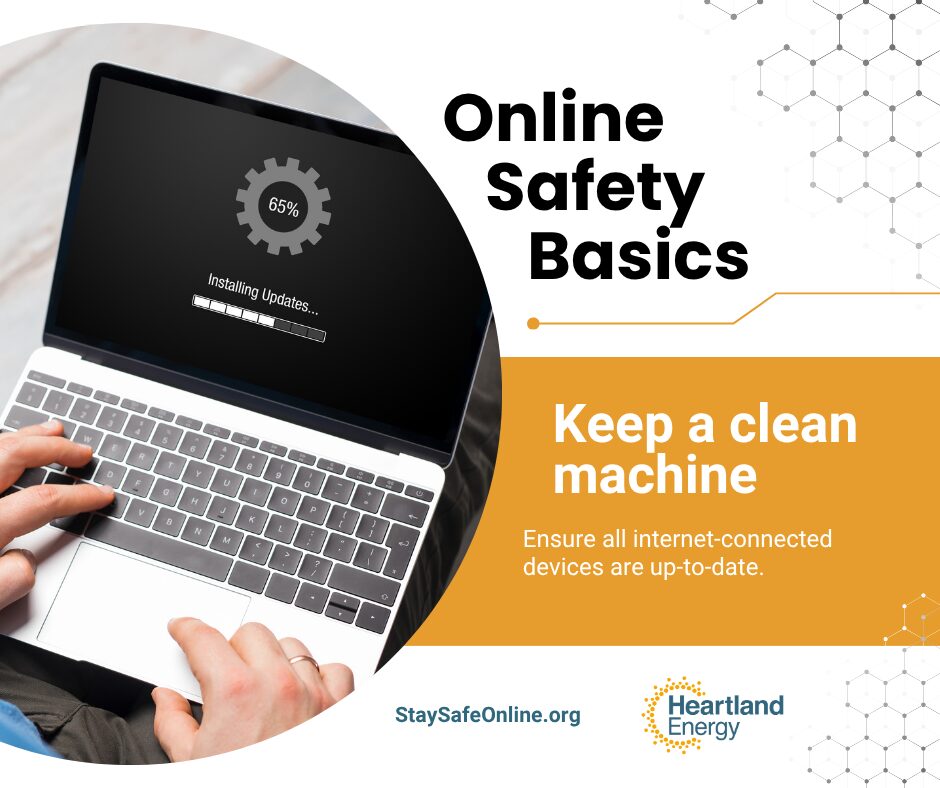 1) Keep a clean machine
1) Keep a clean machine
Software updates are one of the easiest ways to stay protected. Keeping your devices, apps and security tools up-to-date helps block bugs, viruses and other threats before they become a problem. Make it easier and turn on automatic updates or set reminders to check regularly.
 2) Create long, unique passwords
2) Create long, unique passwords
When it comes to passwords, the longer the better. Aim for at least 12 characters and include letters, numbers and symbols. Each account should have its own password and avoid using real words or personal info. However, a passphrase (0nl1neSafety1s4us!) can be both memorable and secure.
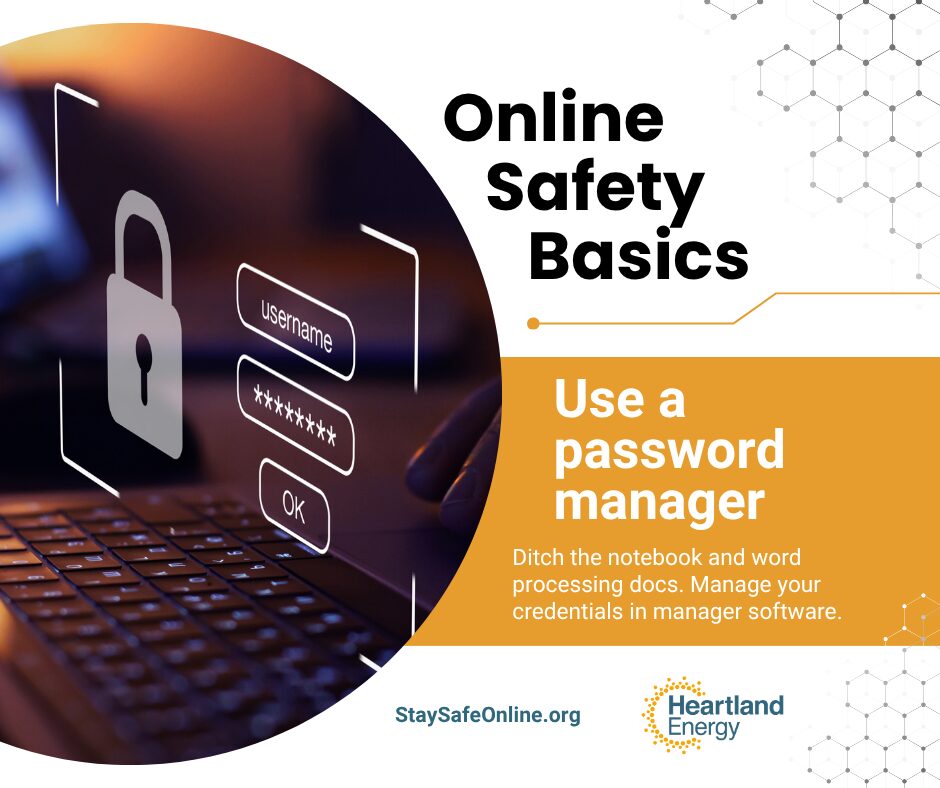 3) Use a password manager
3) Use a password manager
Managing dozens of passwords doesn’t have to be headache. A password manager can safely store all your logins and even suggest strong new ones. Many managers are free and built into browsers or devices, making it easier than ever to generate, store and access your credentials.
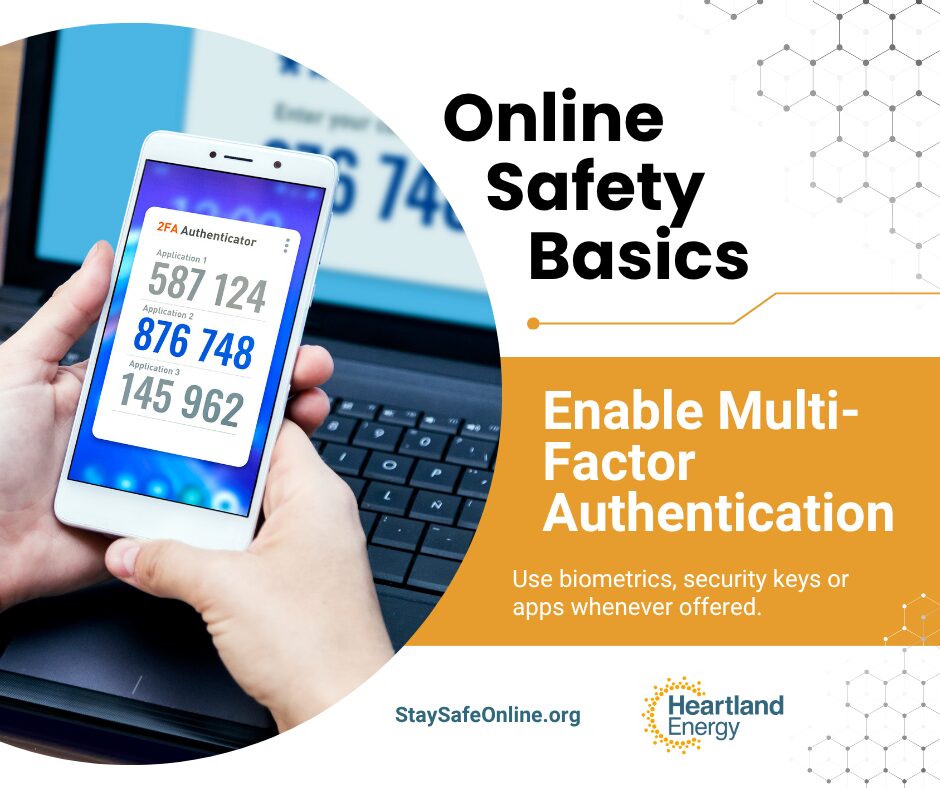 4) Enable multi-factor authentication
4) Enable multi-factor authentication
Add an extra step to your login process with multi-factor authentication (MFA). Whether it’s a fingerprint, face scan or security key, MFA makes it much more difficult to break into your account. Use it whenever it’s offered.
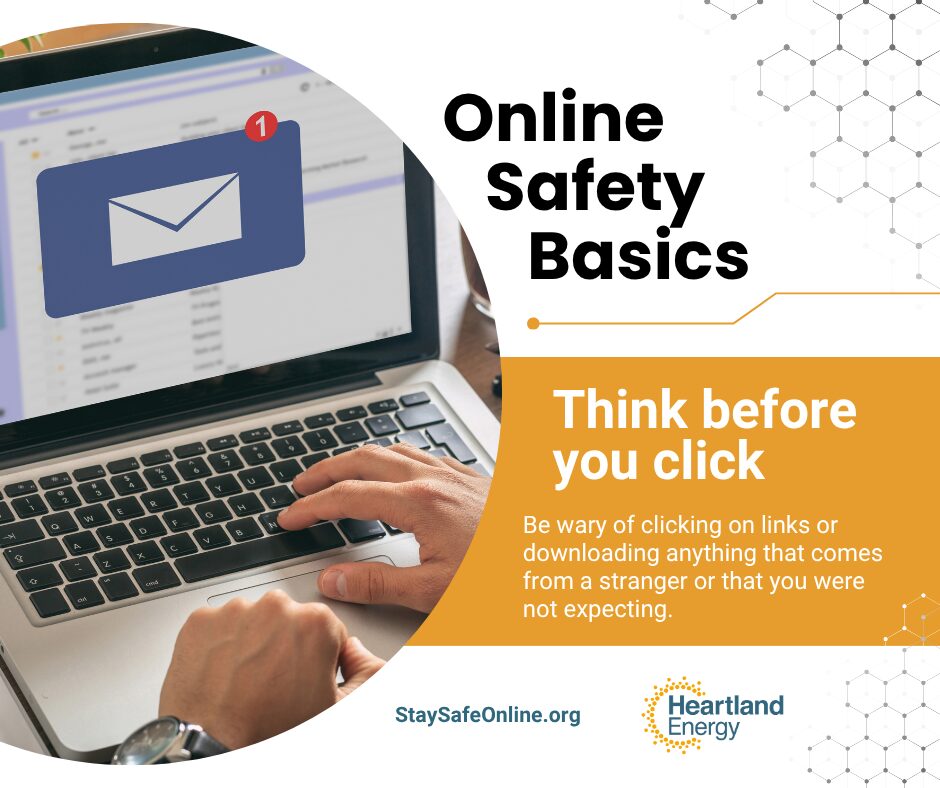 5) Think before you click
5) Think before you click
Cybercriminals often disguise harmful links in emails, texts or online ads. If something looks off, unexpected or too urgent, pause and take a closer look. One quick decision could save you from a major headache.
 6) Report phishing
6) Report phishing
If you spot a suspicious email or message, don’t ignore it–report it. Most email programs and social media programs have ways to flag phishing. At work, alert your IT team. The sooner you report it, the better chance you have of stopping the scam and protecting others. Lastly, don’t forget to block the sender!
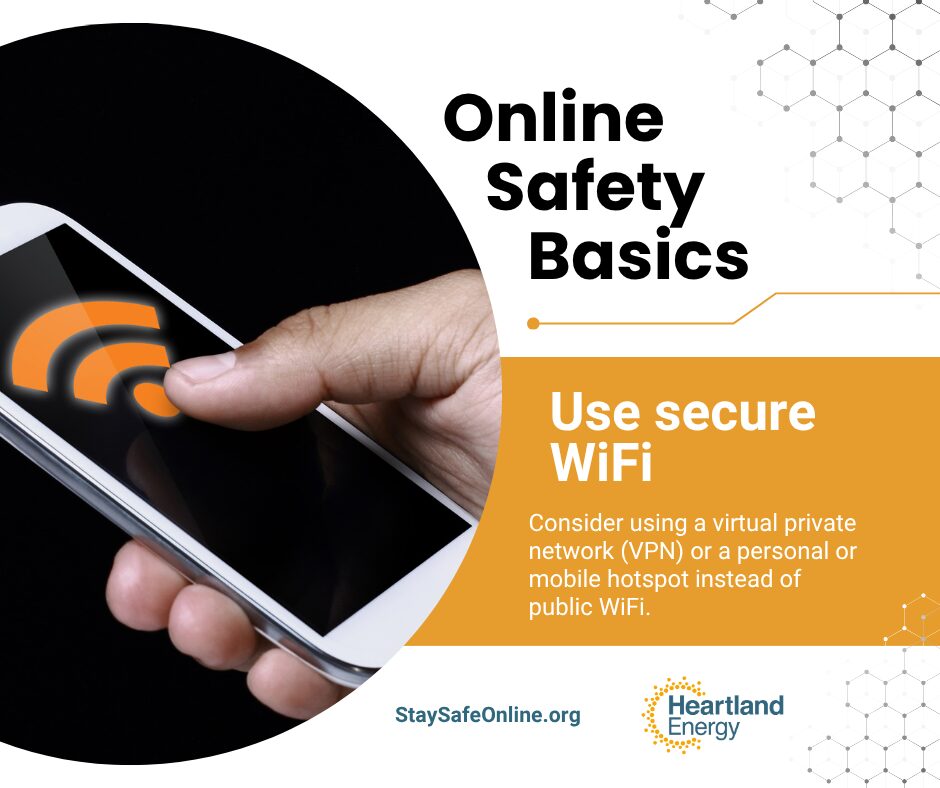 7) Use secure WiFi
7) Use secure WiFi
Though convenient, public WiFi networks are risky. Hackers can spy on what you’re doing or steal your information. Avoid logging into sensitive accounts or accessing financial information when on a public network. When possible, use a VPN or personal hotspot to keep your connection secure.
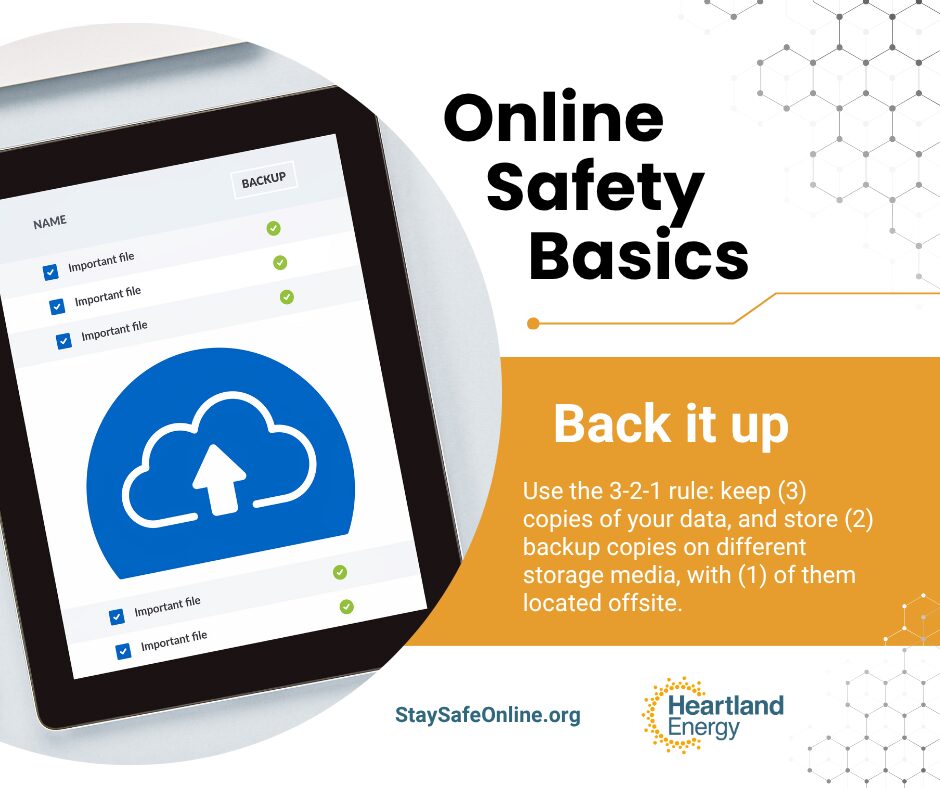 8) Back it up
8) Back it up
Accidents happen–files get deleted, devices crash, and cyberattacks can wipe out your data. Backing up your files regularly ensures you won’t lose important documents, photos or projects. Use both cloud storage and physical backups, and follow the 3-2-1 rule: three copies, two types of storage, one kept offsite.
 9) Check your settings
9) Check your settings
Every app, account and device has privacy and security settings. Make a habit of reviewing them! Adjust settings so you’re only sharing what you’re comfortable with. Check settings periodically to ensure they’re still configured correctly. If you don’t use an app anymore, delete it.
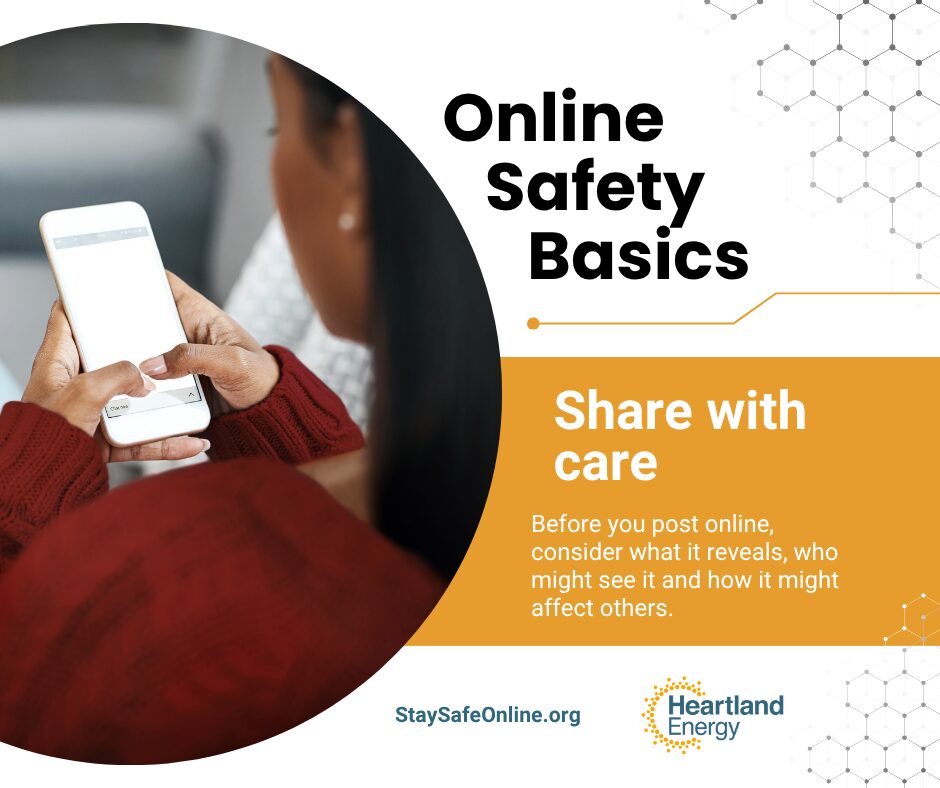 10) Share with care
10) Share with care
Pause before you post. Ask yourself who might see it, how long it will stay online, and whether it could impact someone’s safety or reputation–including your own. Does it reveal any sensitive information? Once something is shared, it’s often out of your control, so make thoughtful choices.
